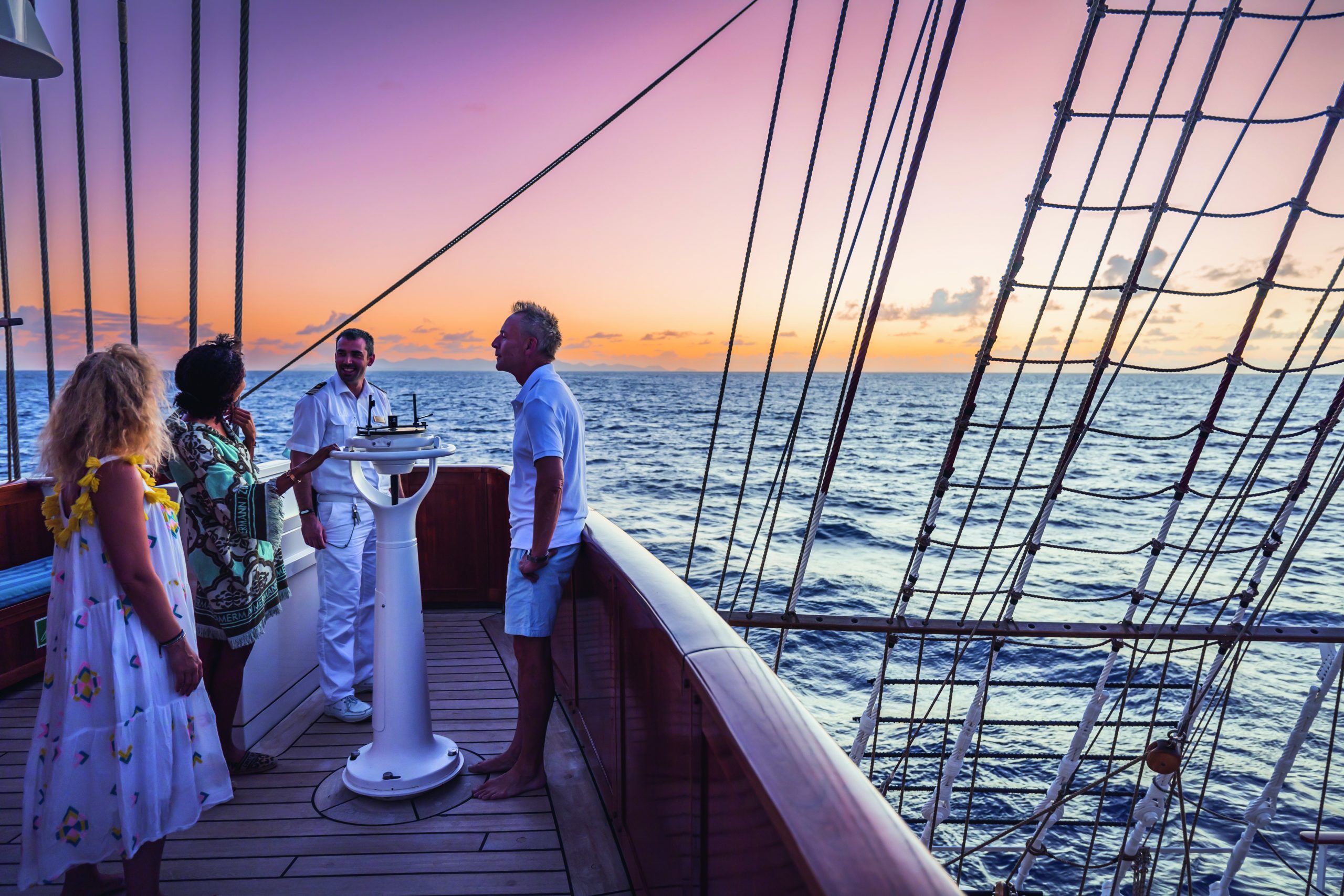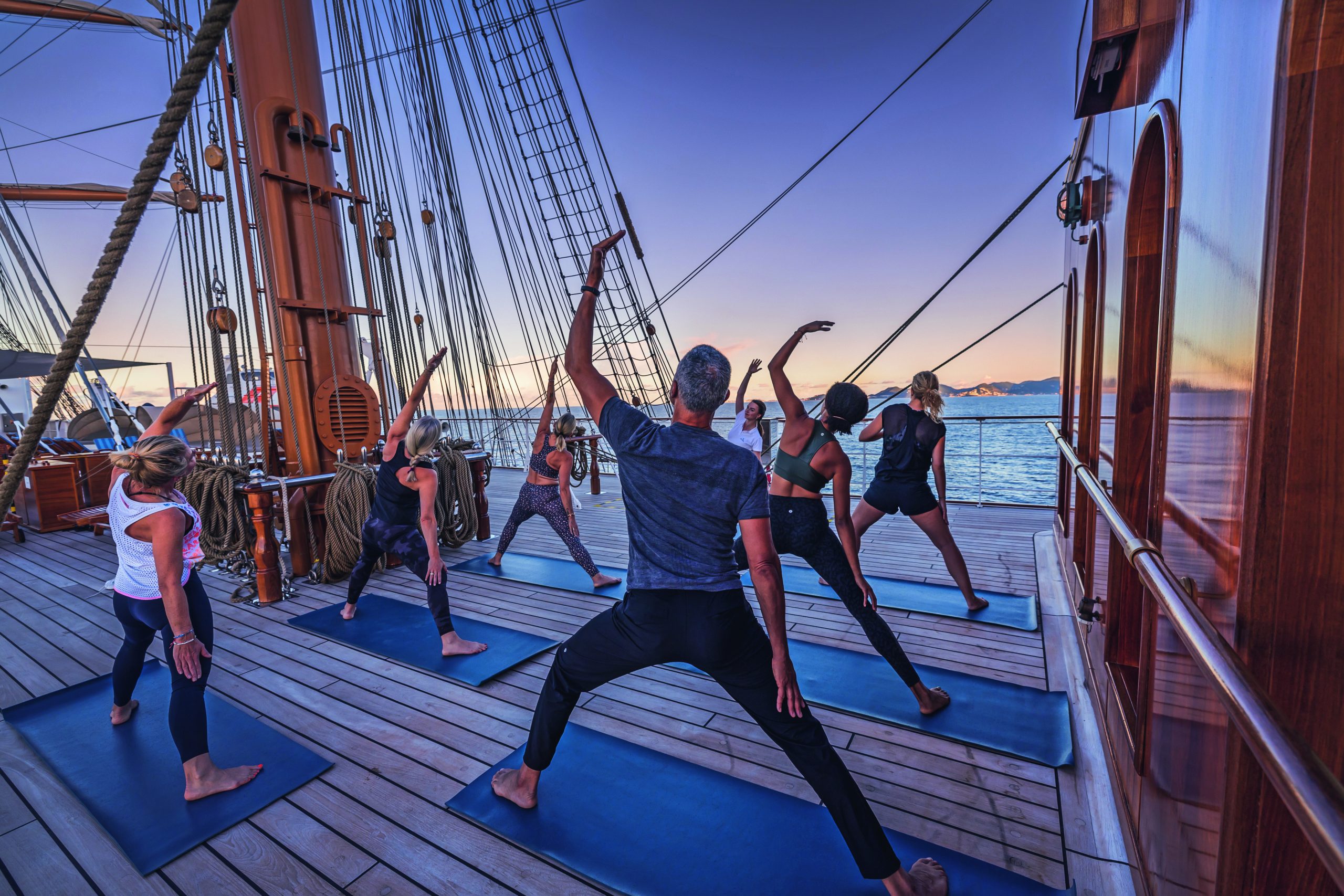Itinerary
Since being designated a European Capital of Culture for 2013, with an estimated €660 million of funding in the bargain, Marseille has been in the throes of an extraordinary transformation, with no fewer than five major new arts centers, a beautifully refurbished port, revitalized neighborhoods, and a slew of new shops and restaurants. Once the underdog, this time-burnished city is now welcoming an influx of weekend tourists who have colonized entire neighborhoods and transformed them into elegant pieds-à-terre (or should we say, mer). The second-largest city in France, Marseille is one of Europe’s most vibrant destinations. Feisty and fond of broad gestures, it is also as complicated and as cosmopolitan now as it was when a band of Phoenician Greeks first sailed into the harbor that is today’s Vieux Port in 600 BC. Legend has it that on that same day a local chieftain’s daughter, Gyptis, needed to choose a husband, and her wandering eyes settled on the Greeks’ handsome commander Protis. Her dowry brought land near the mouth of the Rhône, where the Greeks founded Massalia, the most important Continental shipping port in antiquity. The port flourished for some 500 years as a typical Greek city, enjoying the full flush of classical culture, its gods, its democratic political system, its sports and theater, and its naval prowess. Caesar changed all that, besieging the city in 49 BC and seizing most of its colonies. In 1214 Marseille was seized again, this time by Charles d’Anjou, and was later annexed to France by Henri IV in 1481, but it was not until Louis XIV took the throne that the biggest transformations of the port began; he pulled down the city walls in 1666 and expanded the port to the Rive Neuve (New Riverbank). The city was devastated by plague in 1720, losing more than half its population. By the time of the Revolution, Marseille was on the rebound once again, with industries of soap manufacturing and oil processing flourishing, encouraging a wave of immigration from Provence and Italy. With the opening of the Suez Canal in 1869, Marseille became the greatest boomtown in 19th-century Europe. With a large influx of immigrants from areas as exotic as Tangiers, the city quickly acquired the multicultural population it maintains to this day.
At first glance, it really doesn’t look all that impressive. There’s a pretty port with cafés charging €5 for a coffee and a picturesque old town in sugared-almond hues, but there are many prettier in the hills nearby. There are sandy beaches, rare enough on the Riviera, and old-fashioned squares with plane trees and pétanque players, but these are a dime a dozen throughout Provence. So what made St-Tropez an internationally known locale? Two words: Brigitte Bardot. When this pulpeuse (voluptuous) teenager showed up in St-Tropez on the arm of Roger Vadim in 1956 to film And God Created Woman, the heads of the world snapped around. Neither the gentle descriptions of writer Guy de Maupassant (1850–93), nor the watercolor tones of Impressionist Paul Signac (1863–1935), nor the stream of painters who followed (including Matisse and Bonnard) could focus the world’s attention on this seaside hamlet as did this one sensual woman in a scarf, Ray-Bans, and capris. Vanity Fair ran a big article, “Saint Tropez Babylon,” detailing the over-the-top petrodollar parties, megayachts, and Beyoncé–d paparazzi. But don’t be turned off: the next year, Stewart, Tabori & Chang released an elegant coffee-table book, Houses of St-Tropez, packed with photos of supremely tasteful and pretty residences, many occupied by fashion designers, artists, and writers. Once a hangout for Colette, Anaïs Nin, and Françoise Sagan, the town still earns its old moniker, the “Montparnasse of the Mediterranean.” Yet you might be surprised to find that this byword for billionaires is so small and insulated. The lack of train service, casinos, and chain hotels keeps it that way. Yet fame, in a sense, came too fast for St-Trop. Unlike the chic resorts farther east, it didn’t have the decades-old reputation of the sort that would attract visitors all year around. For a good reason: its location on the south side of the gulf puts it at the mercy of the terrible mistral winter winds. So, in summer the crowds descend and the prices rise into the stratosphere. In July and August, you must be carefree about the sordid matter of cash. After all, at the most Dionysian nightclub in town, a glass of tap water goes for $37 and when the mojo really gets going, billionaires think nothing of “champagne-spraying” the partying crowds—think World Series celebrations but with $1,000 bottles of Roederer Cristal instead of Gatorade. Complaining about summer crowds, overpricing, and lack of customer service has become a tourist sport and yet this is what makes St-Tropez—described by the French daily newspaper Le Figaro as the place you can see “the greatest number of faces per square meter”—as intriguing as it is seductive.
Calvi, Corsica’s slice of the Riviera, has been described by author Dorothy Carrington as “an oasis of pleasure on an otherwise austere island.” Calvi prospered by supplying products to Genoa; its citizens remained loyal supporters of Genoa long after the rest of the island declared independence. Calvi also claims to be the birthplace of Christopher Columbus. During the 18th century the town endured assaults from Corsican nationalists, including celebrated patriot Pasquale Paoli. Today Calvi sees a summertime invasion of tourists, drawn to the 6-km (4-mile) stretch of sandy white beach, impressive citadel overlooking the Old Town, lively restaurants, and buzzing nightlife.
The colorful facades and pedestrians-only calata (promenade) make Portovenere the quintessential Ligurian seaside village. As a UNESCO World Heritage Site, its harbor is lined with tall, thin “terratetto” houses that date from as far back as the 11th century and are connected in a wall-like formation to protect against attacks by the Pisans and local pirates. Its tiny, carruggi (alley-like passageways) lead to an array of charming shops, homes, and gardens and eventually to the village’s impressive Castle Doria high on the olive tree covered hill. To the west standing guard over the Mediterranean is the picturesque medieval Chiesa di San Pietro, once the site of a temple to Venus (Venere in Italian), from which Portovenere gets its name. Nearby, in a rocky area leading to the sea, is Byron’s Cave, a favorite spot that the poet loved to swim out into the sea from.
Livorno is a gritty city with a long and interesting history. In the early Middle Ages it alternately belonged to Pisa and Genoa. In 1421 Florence, seeking access to the sea, bought it. Cosimo I (1519–74) started construction of the harbor in 1571, putting Livorno on the map. After Ferdinando I de’ Medici (1549–1609) proclaimed Livorno a free city, it became a haven for people suffering from religious persecution; Roman Catholics from England and Jews and Moors from Spain and Portugal, among others, settled here. The Quattro Mori (Four Moors), also known as the Monument to Ferdinando I, commemorates this. (The statue of Ferdinando I dates from 1595, the bronze Moors by Pietro Tacca from the 1620s.)In the following centuries, and particularly in the 18th, Livorno boomed as a port. In the 19th century the town drew a host of famous Britons passing through on their grand tours. Its prominence continued up to World War II, when it was heavily bombed. Much of the town’s architecture, therefore, postdates the war, and it’s somewhat difficult to imagine what it might have looked like before. Livorno has recovered from the war, however, as it’s become a huge point of departure for container ships, as well as the only spot in Tuscany for cruise ships to dock for the day.Most of Livorno’s artistic treasures date from the 17th century and aren’t all that interesting unless you dote on obscure baroque artists. Livorno’s most famous native artist, Amedeo Modigliani (1884–1920), was of much more recent vintage. Sadly, there’s no notable work by him in his hometown.There may not be much in the way of art, but it’s still worth strolling around the city. The Mercato Nuovo, which has been around since 1894, sells all sorts of fruits, vegetables, grains, meat, and fish. Outdoor markets nearby are also chock-full of local color. The presence of Camp Darby, an American military base just outside town, accounts for the availability of many American products.If you have time, Livorno is worth a stop for lunch or dinner at the very least.
Ship features
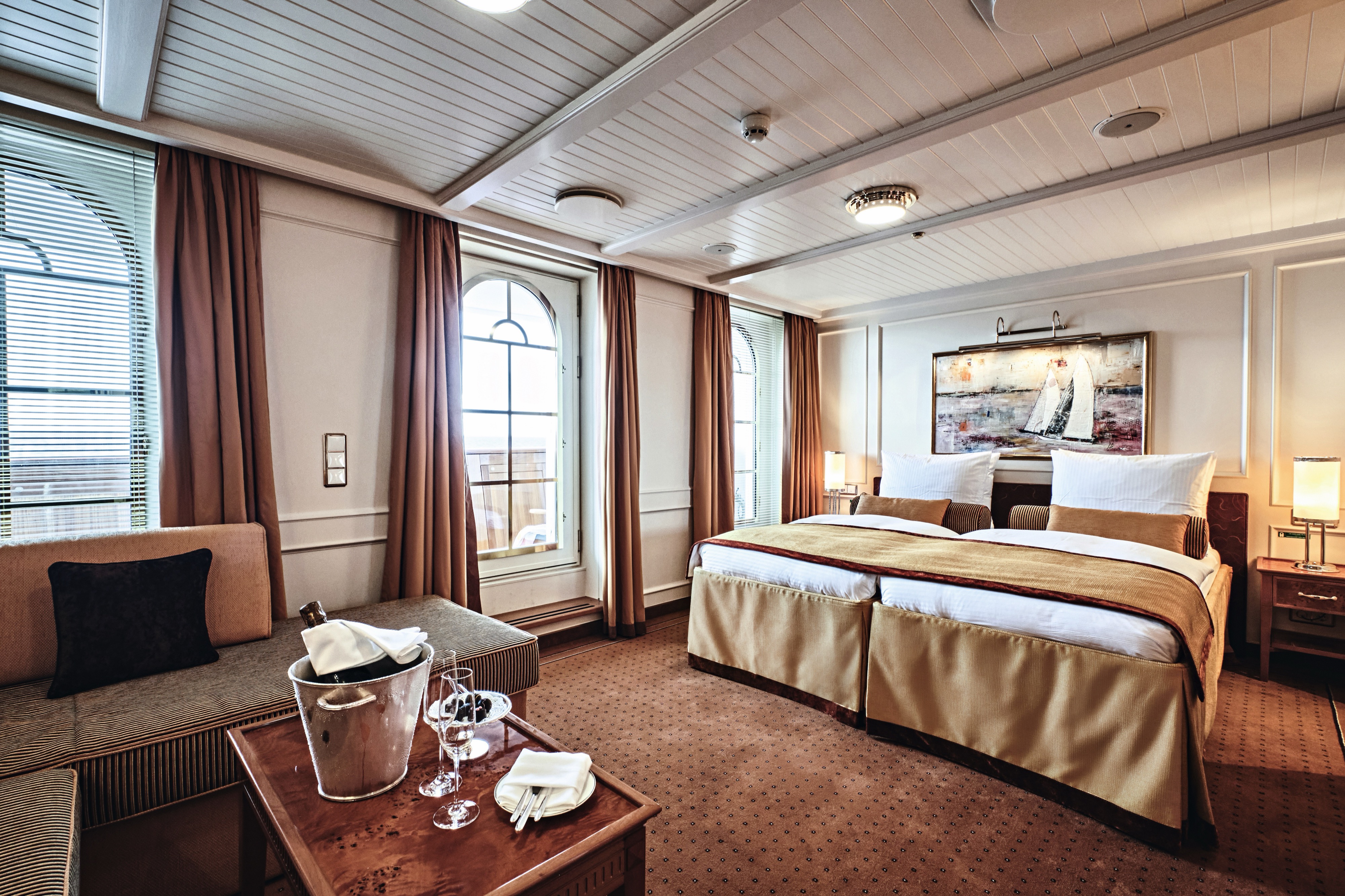
Suites with Balcony (Cat. A)
The SEA CLOUD SPIRIT carries the spirit of our legendary flagship into a new age. This is also reflected in the ambience of the owner suites on the panorama deck. Her noble design combines with the spaciousness of the room to create an exclusive living environment. The idea of the owner suite is the modern interpretation of a tradition from the time when the ship owners themselves lived on board and had the best cabins furnished for themselves. The feeling of being the centre of the endless expanse of the ocean is reinforced by the unique perspective through the large panoramic windows overlooking the sea. Experiencing the sea is meant literally here – on the large balcony, sailing becomes a special pleasure.
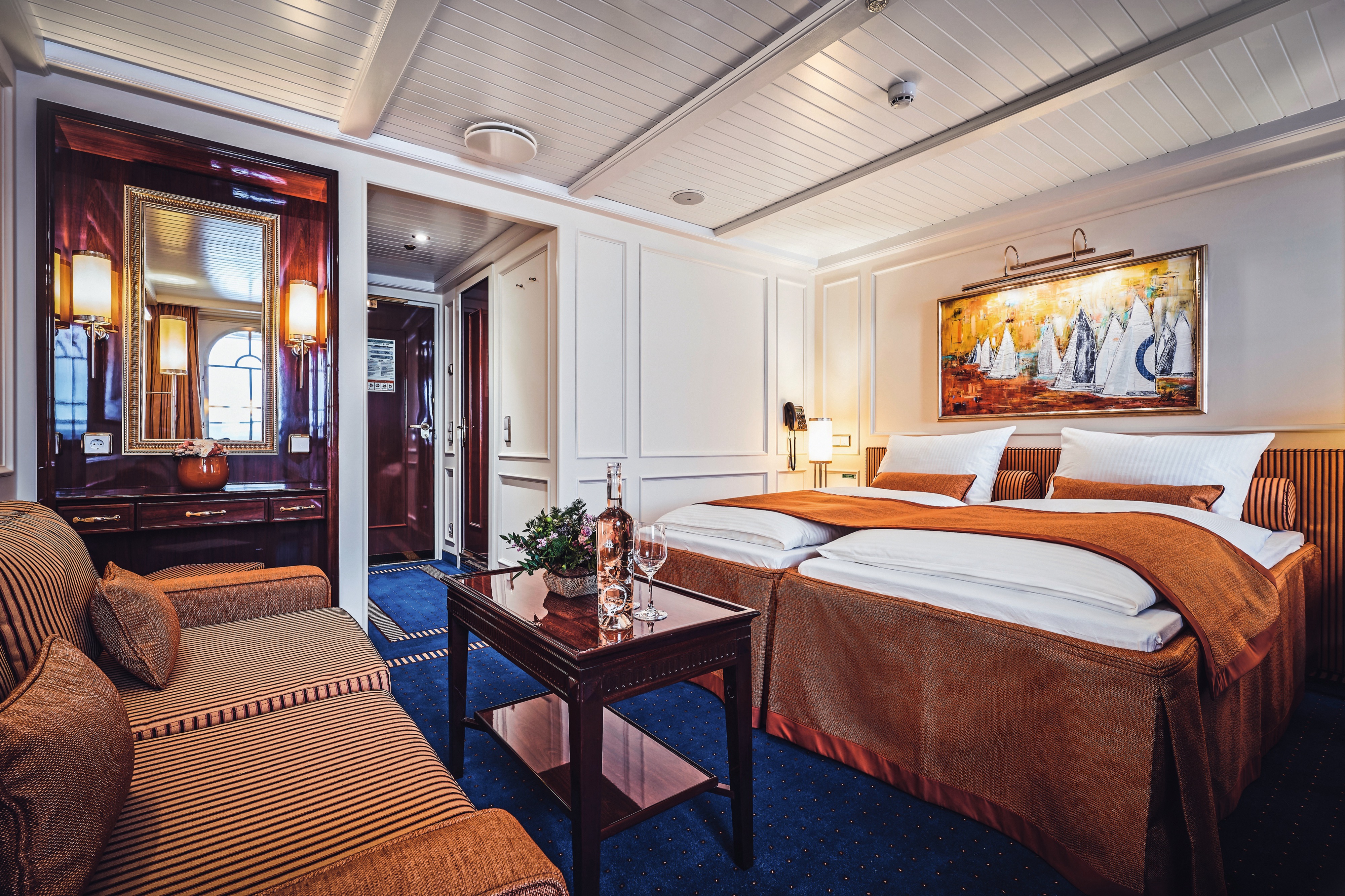
Junior Suites with Balcony (Cat. B)
Our junior suites are also characterised by the elegant interpretation of the SEA CLOUD’s classic design and are designed with love for detail. Their generous character is further enhanced by the fact that they are flooded with light thanks to the panorama windows. Those who are still not satisfied with the view can enjoy the proximity of the sea from the spacious balcony. These cabins are a must for people who love the sea and above all fresh air. The simple elegance of the classic modern interior corresponds in gentle tension with the maritime atmosphere on board our new ship.
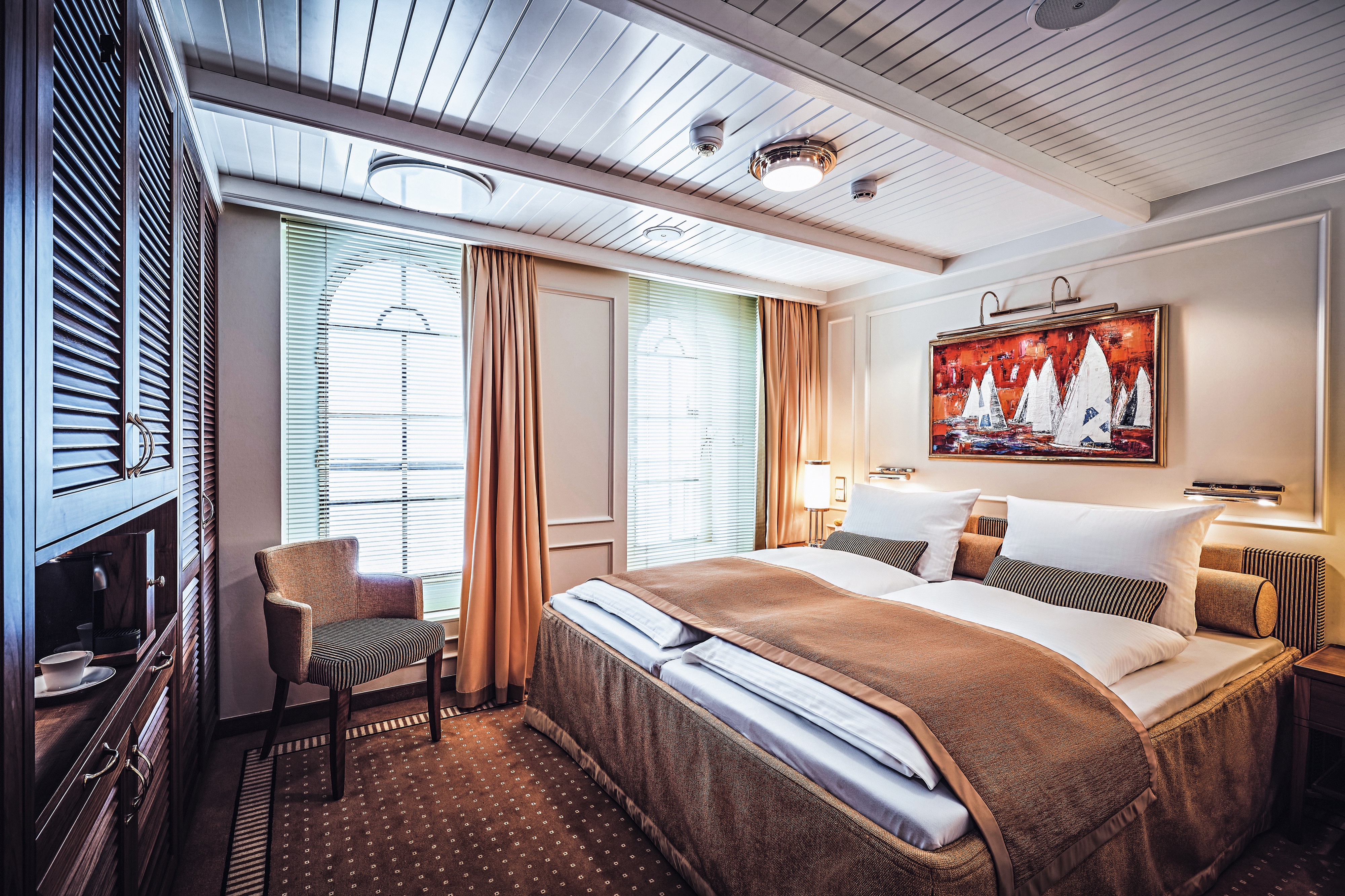
Grand Stateroom
The outside cabins of this category on the lido deck combine the comfort and personal atmosphere of a five-star hotel room with the maritime, elegant cosiness that only the SEA CLOUD SPIRIT offers. The high panoramic windows can be opened. Of course, these panoramic windows also offer a wonderful view of the sea at any time of day.

Deluxe Stateroom
The large portholes give our De-Luxe outside cabins on the cabin deck a special maritime flair. Together with their elegant yacht ambience, these living spaces emphasise the certainty of being on an extraordinary journey with an extraordinary ship. Precious materials and the stylish design give the spacious cabins a cosy atmosphere. And of course this cabin category is also characterised by the combination of the long SEA CLOUD tradition with the modern interpretation of classic elegance.

Superior Stateroom
These outside cabins on both sides of the cabin deck are the epitome of cosiness on board the SEA CLOUD SPIRIT. This is where you can retreat, switch off and relax while enjoying the unique luxurious ambience for which our private yachts are famous. Here too, tradition and the future of travel on board a modern tall ship meets in the elegant interior.
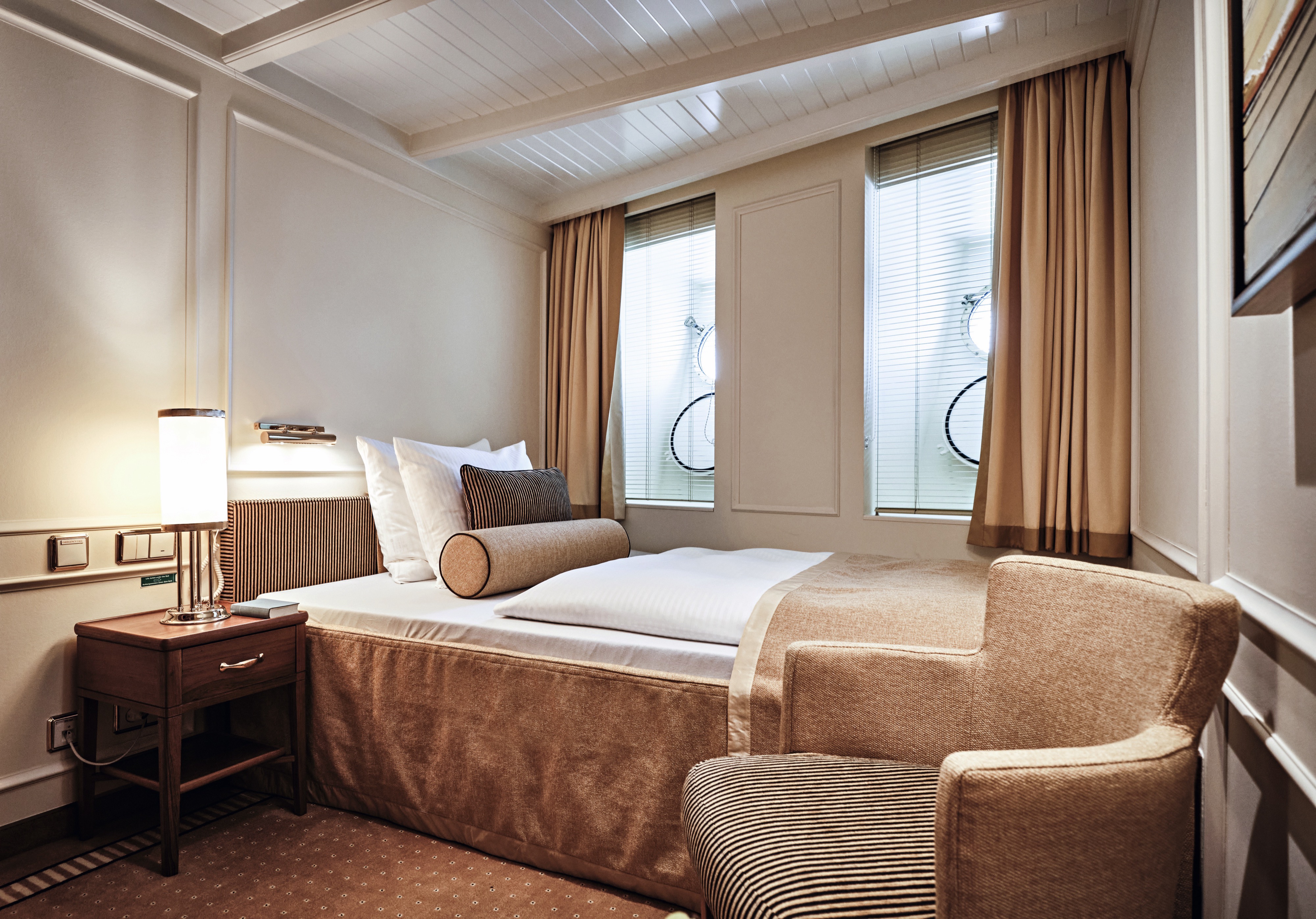
Superior Single Stateroom
The two cabins in this category are the ideal home for single travellers who want to enjoy the special comfort of the SEA CLOUD SPIRIT. In a slightly smaller space, they offer the same luxury and comfort as the other double cabins on the cabin deck.

Guarantee Double
The range of accommodation starts from Cat. E. You will receive your exact cabin number when arriving on board. The allotment for this category is very limited.
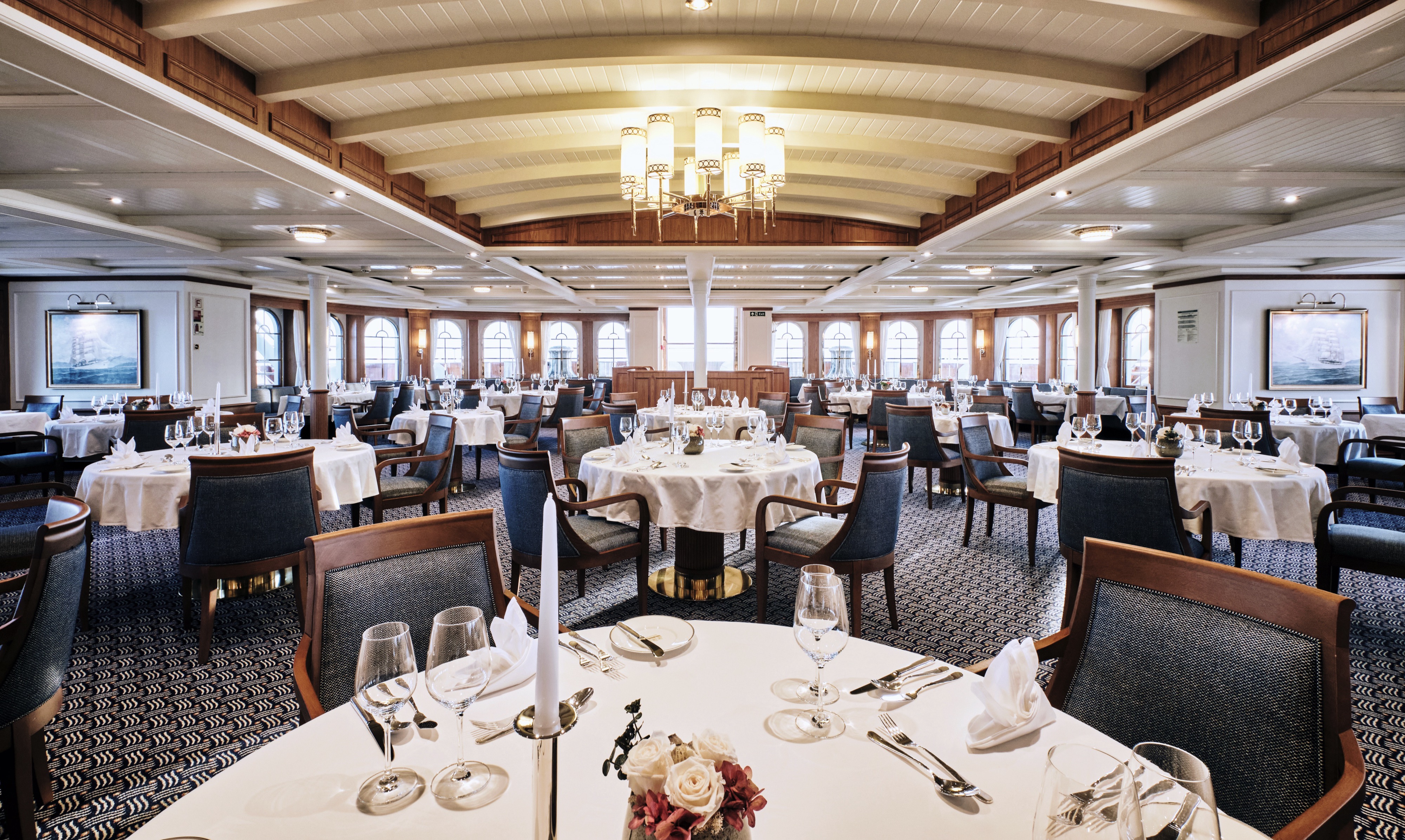
Restaurant & Lido Deck with Bistro
Whether lunchtime buffet, sundowner or barbecue – meet other sailing enthusiasts for companionable talks in the comfortable teak chairs on the lido deck.
In the evening, elaborate menus, fine wines and a first-class service in the 180° panorama restaurant will not only let the palate embark on a voyage of discovery. In addition to the “Fine Dining” evening menu in the restaurant, we now also offer you the option to dine on the lido deck at a time of your preference and enjoy our flexible bistro menu selection.
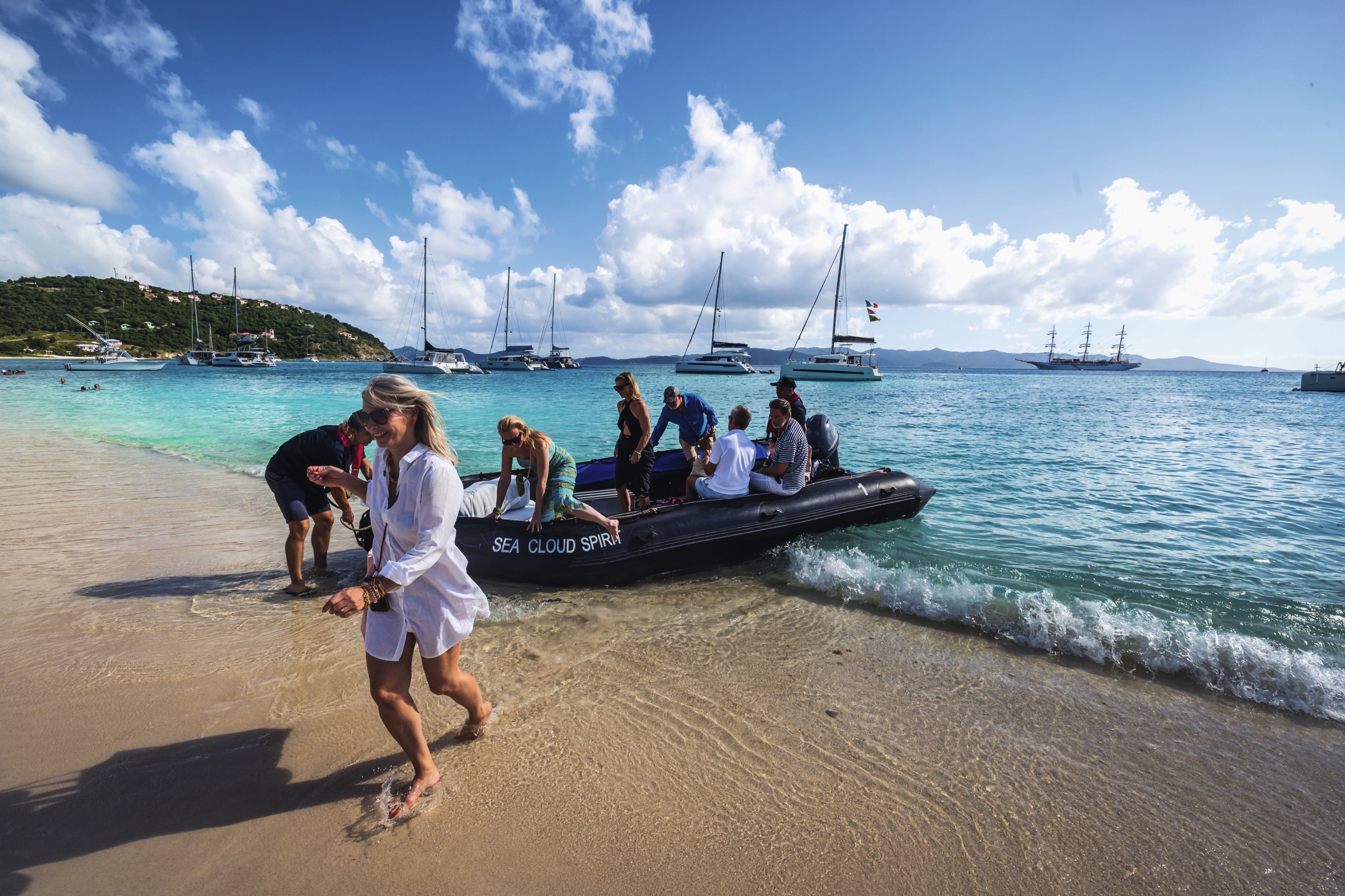
Zodiacs
Smaller ships, greater possibilities
Among the many joys of travelling smaller: a quick spin on a zodiac, enjoying the beach barbeques in secluded bays, photo safaris, pausing for a dip in the azure sea. And on selected tours, some exclusive experiences are included – a private concert, an opera house or a palace tour, a culinary visit to a special vineyard, or a front-row seat at a legendary regatta.

Watersports
Dive in and be active
Whether you want to start your swim directly from the ship or explore the colorful world on the reef – water sports are even more fun under the Caribbean sun. Equipment is available for everyone: Snorkels, fins and stand-up paddles are waiting for you. If you are in the mood for even greater action, let yourself be glided across the crystal clear waters by tubing in the Caribbean.
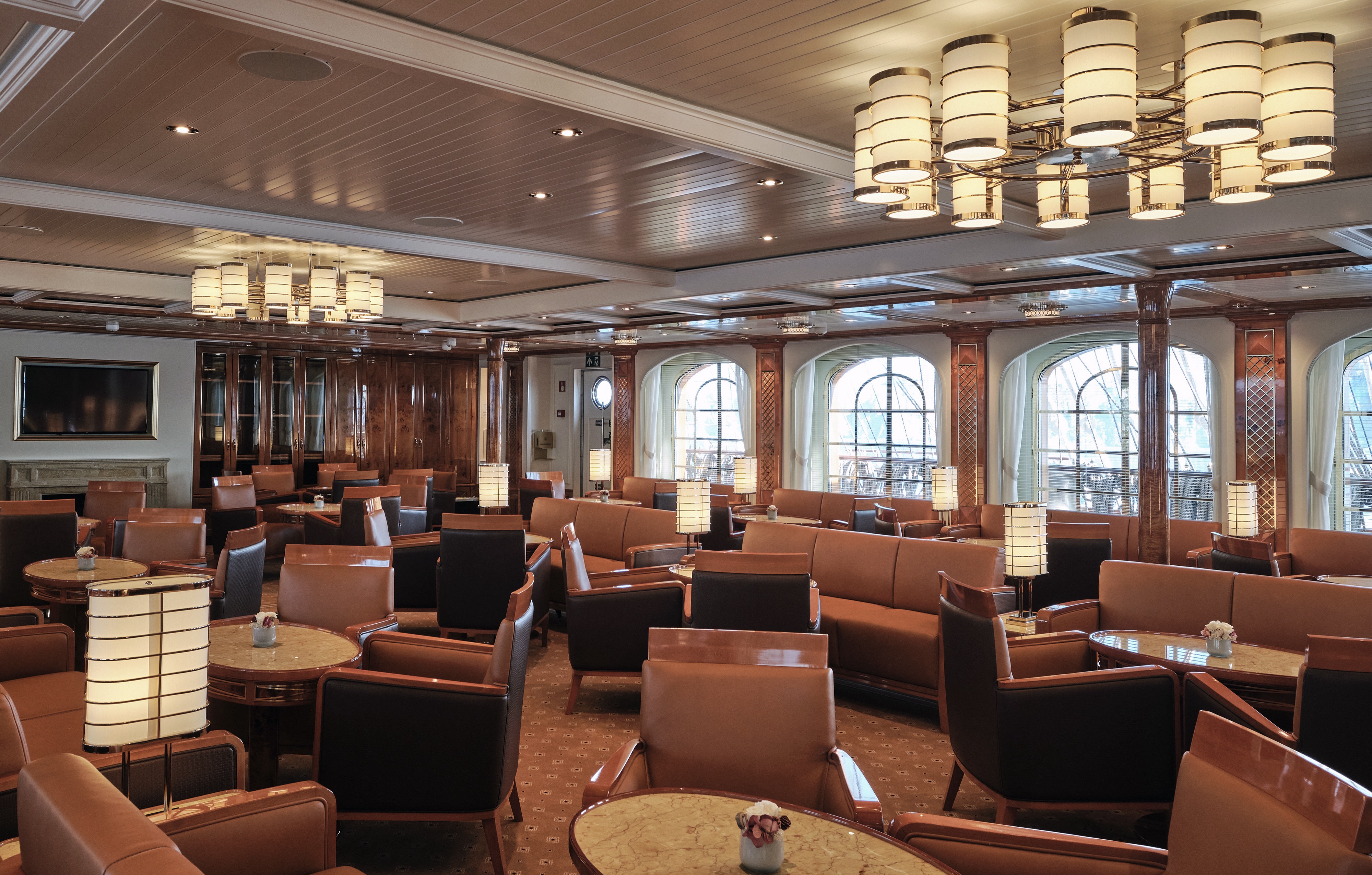
Lounge
Classic yacht style with many maritime details: In the elegant lounge with its Steinway grand piano, you will instantly feel at home.
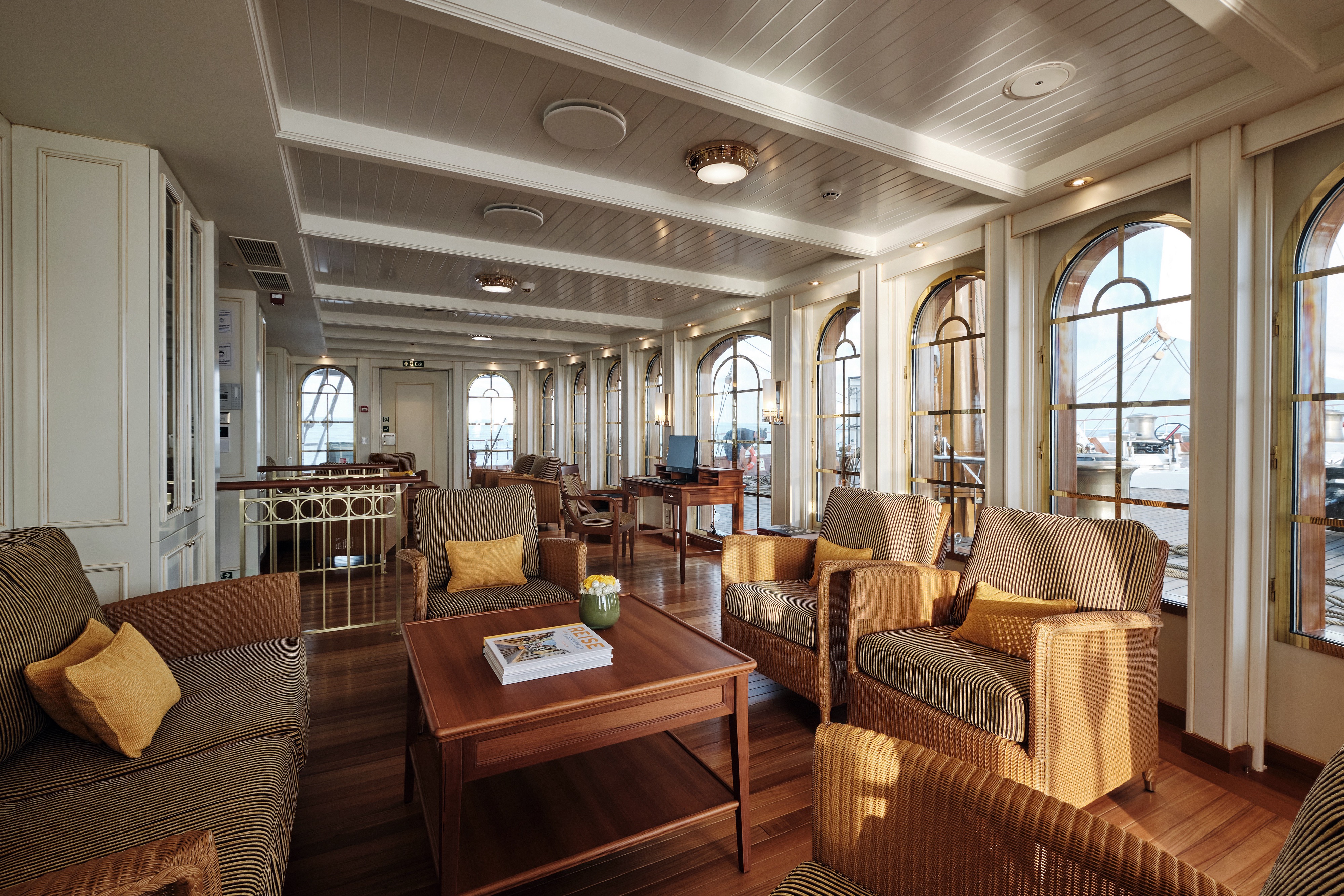
Library
The light-flooded library can also be found on the same deck. The breathtaking panoramic view of the foredeck through the large panorama windows is stunning at any time of day.

On Deck
You can find the Self-Service Bar, Shower and Fitness Area on the Sun Deck.
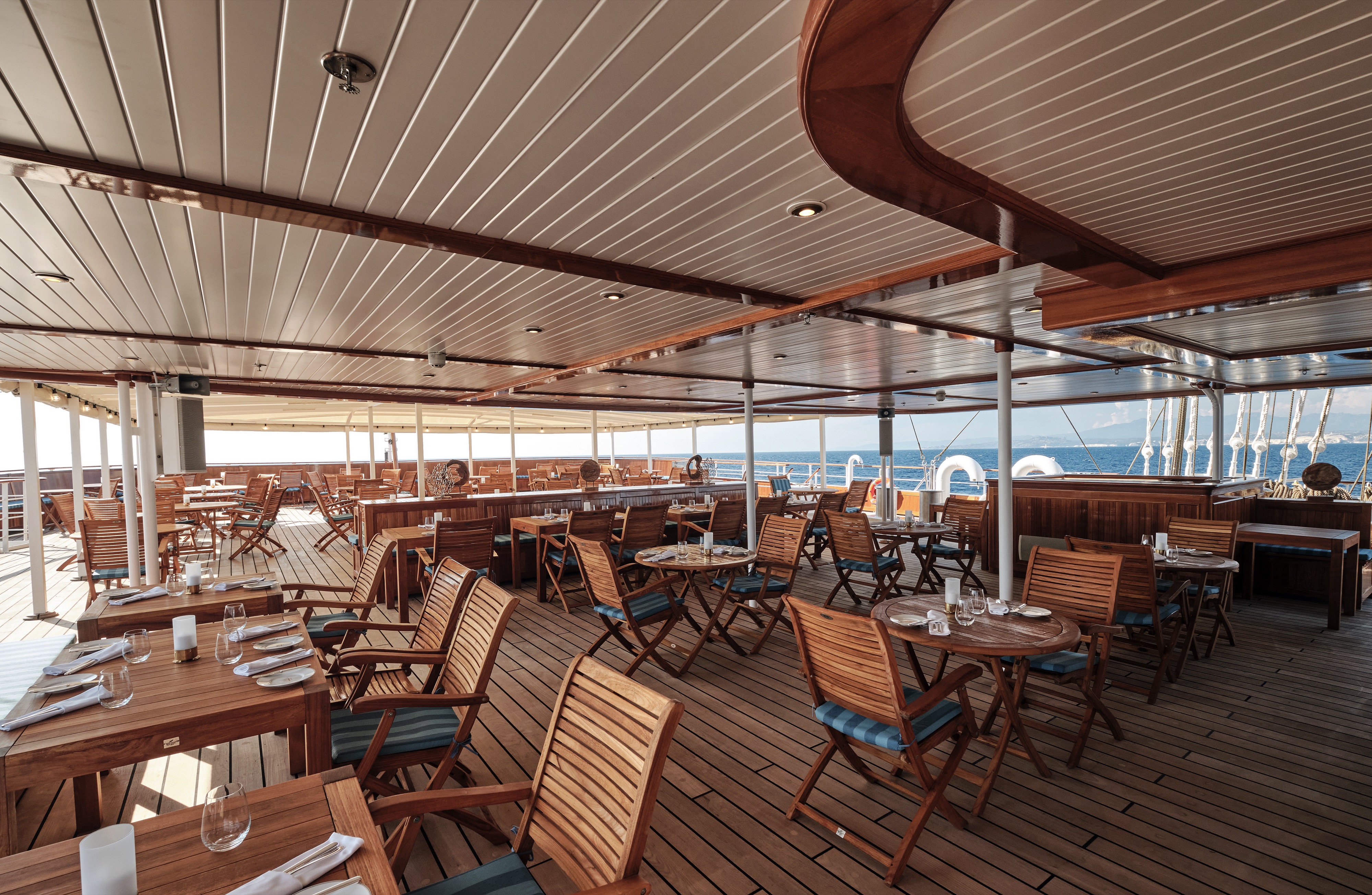
Lido Deck with Bar
Whether lunchtime buffet, sundowner or barbecue – meet other sailing enthusiasts for companionable talks in the comfortable teak chairs on the lido deck.

Fitness & Sun Deck
Only the best for body and soul: The fitness area on the sun deck features the latest cardio equipment and offers a great ocean view. After your sports unit, you can relax right next door on the spacious sun deck with sunloungers, circular sunbeds and a shower. Or you enjoy a relaxing yoga session.
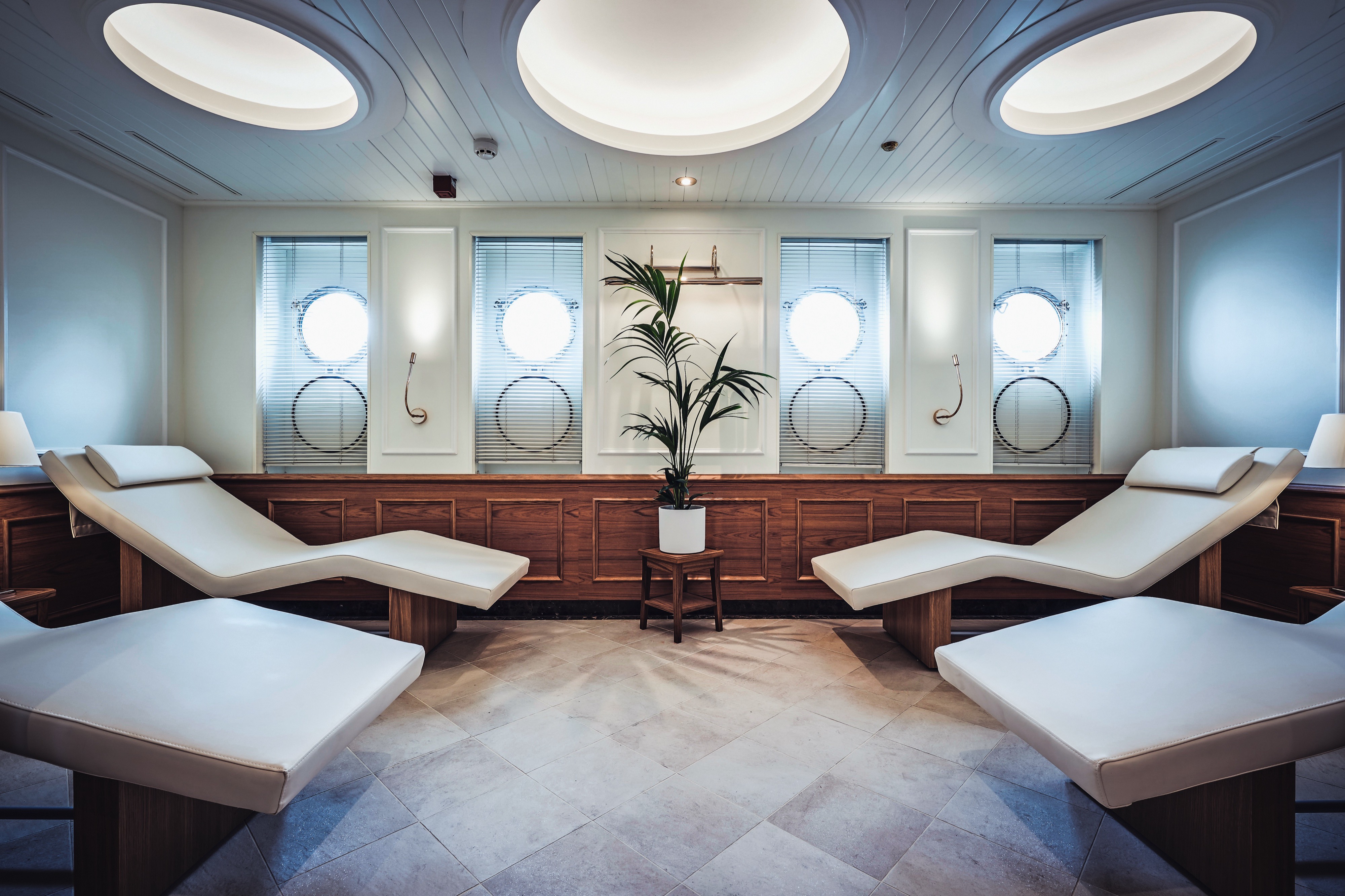
Spa and Wellness
The generous spa impresses with two treatment rooms, steam bath, Finnish sauna, relaxation room, multi-sensory shower, various massages, beauty parlour and hairdressing salon.
Special Dietary Requirements
The chef will happily accommodate special diet requests—please let us know about any requests in advance so that we may prepare.
Dress Code
During the day, and depending on the weather, a sophisticated summer look is suitable. For the evening, we recommend smart-casual wear. We also kindly request that guests refrain from wearing shorts at evening meals. The Captain’s Dinner (an event which normally takes place twice on each trip – once on short cruises) is a time when our guests tend to opt for a more elegant look. We recommend a suit for men and appropriate smart dress for women. Please remember to take some non-slip shoes with you.
Disabled Access
Our tall ships SEA CLOUD, SEA CLOUD II and SEA CLOUD SPIRIT are not accessible for all people with disabilities and are not suitable for wheelchair users. Please contact our cruise consultancy for further details.
Smoking Policy
Smoking is permitted only on the outer decks outside of meal times. We kindly request that smokers take the comfort of other passengers into consideration. Smoking is prohibited on the blue lagoon deck and covered areas of the spanker and lido deck at all times.
Laundry Services
Laundry services available on board are limited to washing and ironing. There is no dry-cleaning available. The washing and ironing service is provided at an additional charge and is carried out overnight. For guests with bookings in Cat. A-C (SEA CLOUD) or Cat. A+B (SEA CLOUD II and SEA CLOUD SPIRIT), this service is free of charge. For safety reasons, passengers are not permitted to iron in their cabins.
WI-FI
Our yachts are equipped with Starlink. WIFI is available in the public areas on all ships and in your cabin on SEA CLOUD SPIRIT. You can use your own laptop, tablet, or smartphone to connect to the internet with the access code (WIFI) for a fee. WIFI packages can be purchased at the reception. Please note that WIFI service on board is not comparable to on land and might be interrupted at times due to lack of coverage in certain areas.
Children on Board
Children are of course very welcome on our ships, however there is no supervision or entertainment available for children.
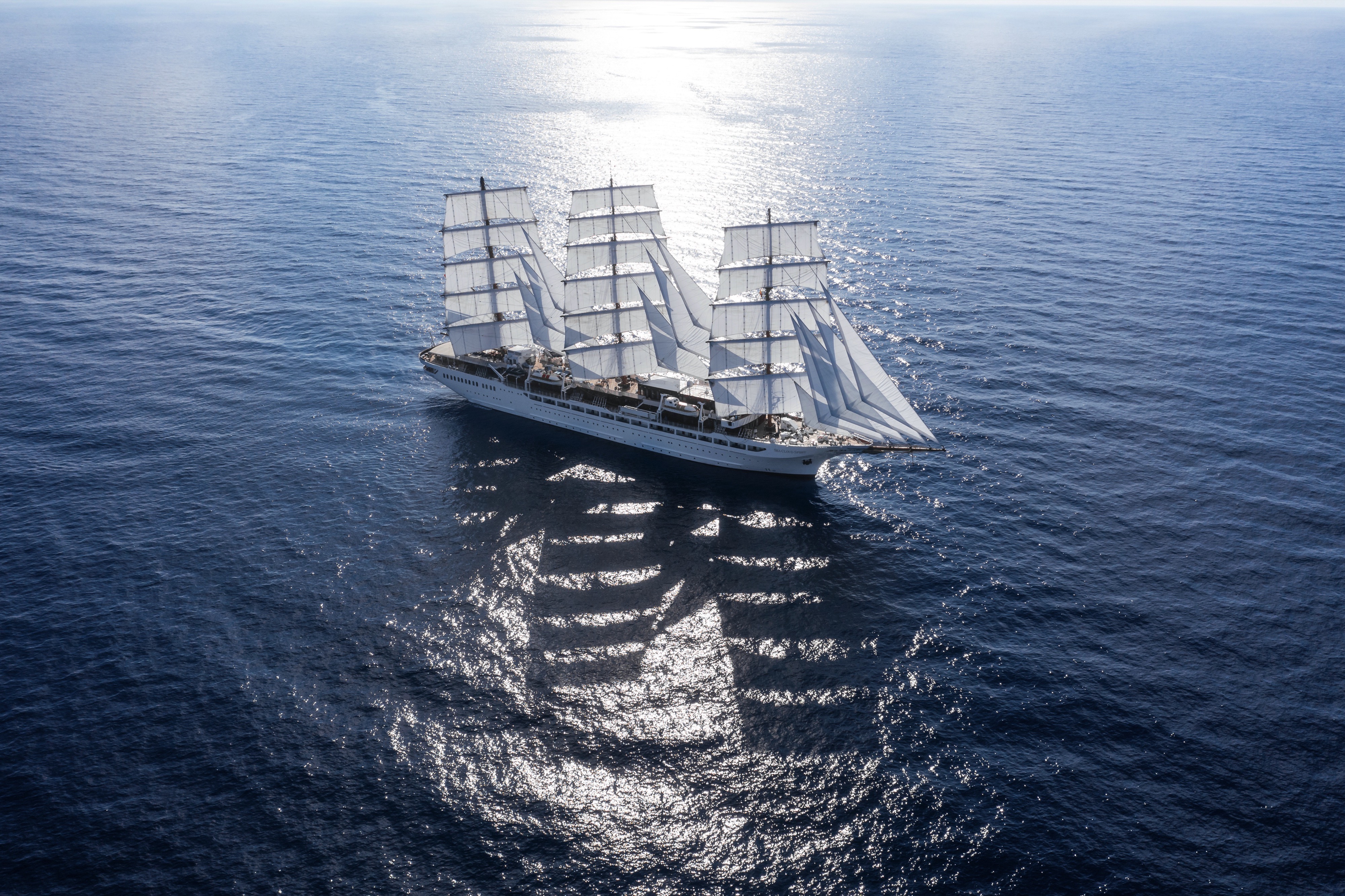
Sustainability & Low Impact Tourism
We approach the people and their cultures with respect in all the regions we visit, travelling mindfully through the local environment. By doing this, we can bring our guests closer – in the truest sense of the word – to these places, and what makes each one special.
THE WINDJAMMER EXPERIENCE
For you and us alike, the key attraction of our trips is the chance to sail on the open seas.
We therefore take every opportunity to set sail and be propelled by the sheer power of the wind. That is why the captain will sometimes change the route if the weather requires it. On board our SEA CLOUD tall ships, you’ll experience the elements, as many of the day-to-day activities take place outside.
HAVING AS LITTLE IMPACT AS POSSIBLE
When we do have to start the engines, we utilise low-sulphur marine diesel on all three of our windjammers.
For us, this is standard practice. Even the SEA CLOUD, our very first windjammer, was equipped with this technology right from the start. Our motto: to minimise our impact on the environment yet still make a profound and positive impression on those around us.
A SUSTAINABLE APPROACH TO LIFE ON-BOARD
Avoiding plastic, reducing water usage and protecting the environment.
These are the factors that guide us in the day to day operation of our ships and our ongoing development of eco-friendly alternatives. To cite just one example, our reusable drinks bottles are not only easy on the eye, but also easy on the environment.
QUALITY, NOT QUANTITY
Our ‘small but perfectly formed’ windjammers are able to visit smaller ports, away from the busy routes frequented by large cruise liners.
With a maximum of 64 to 136 passengers, we’re always welcomed in those locations thanks to our approach of visiting local communities rather than overwhelming them. Needless to say, our itineraries also include some classic destinations, though we usually visit these only when the mega-liners have moved on.
BOOSTING THE LOCAL ECONOMY
Procuring supplies locally, working with local, smaller-scale agencies and paying fair prices.
By taking this approach, we see ourselves as a partner for our local service providers, with whom we’ve built relationships based on trust over many years. After all, we want our voyages to benefit both our guests and the communities we visit around the world.
AUTHENTIC CUISINE
Our menus are always a true reflection of the regional cuisine.
This is because our chefs enjoy buying exotic spices, local specialities and freshly caught fish from local markets to bring you – even in a culinary sense – closer to the places we visit.
A MEMBER OF THE FUTOURIS NETWORK
Heading into the future with Futouris.
Preserving the natural and cultural heritage of our world and shaping the future of tourism in a sustainable way is what Futouris stands for. Members of the network are working globally to improve people’s living conditions, preserve biodiversity and protect the environment and climate.
Medical Facilities
All three ships have a hospital, which is supervised by a ship’s doctor. Medical consultation hours can be found in the daily program. In case of an emergency, the doctor can be reached at any time by calling 911.

Sun Deck
- Fitness Area
- Self-Service Bar
- Captain
- Bridge
- Shower
- Sun Deck
- Elevator

Lido Deck
- Lido Bar & Bistro
- Lounge
- Elevator
- Library
- De Luxe Lido Cabins

Veranda Deck
- Elevator
- Restaurant
- Reception
- Suites
- Junior Suites

Cabin Deck
- De Luxe Cabins
- Superior Cabins
- Superior Single Cabins
- Elevator
- Hospital
- Swim Platform
- Hairdresser
- Relaxation Room
- Finnish Sauna
- Shower
- Foot Bath
- Treatment Rooms
- Boutique
- Stream Bath

